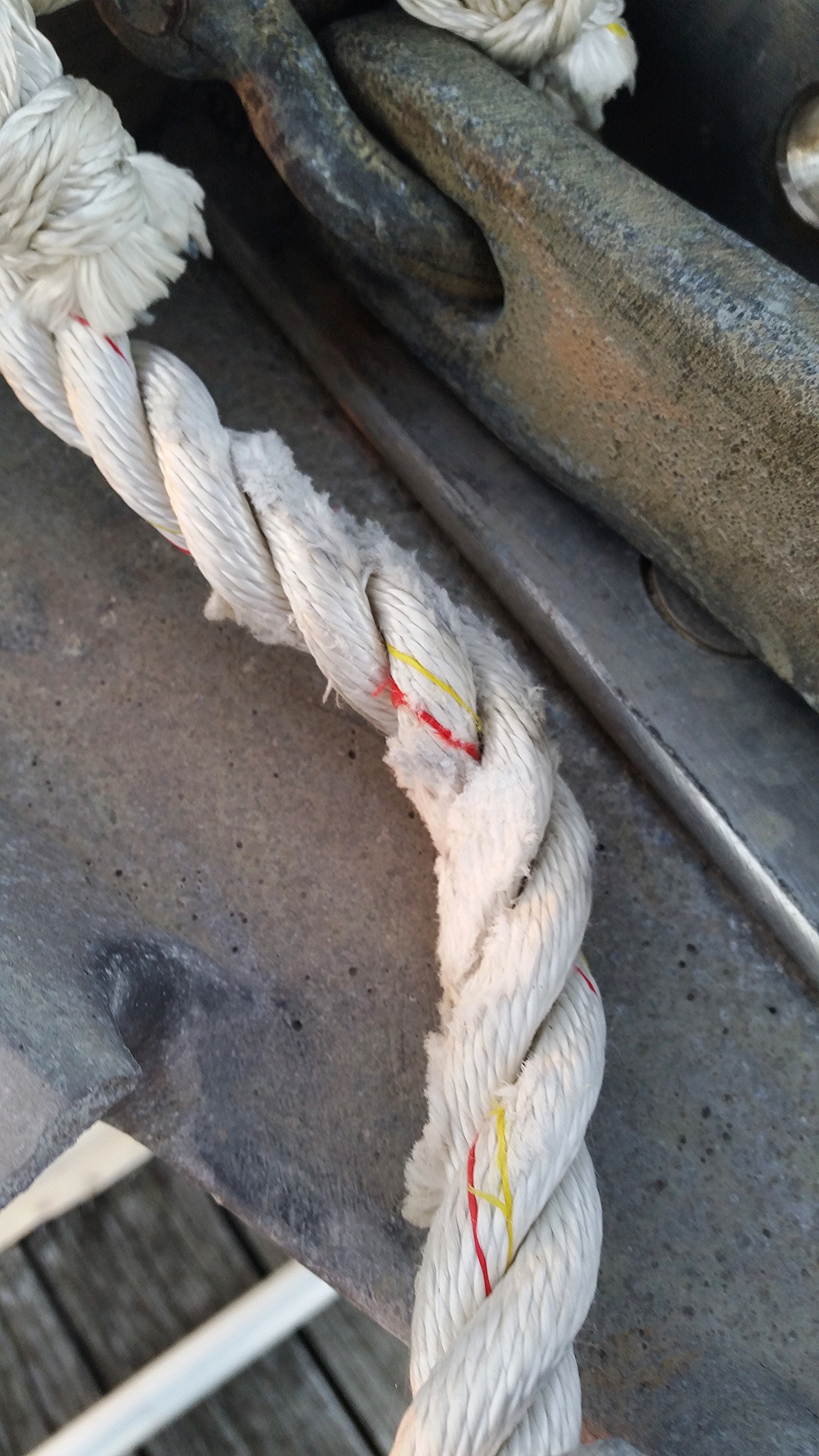Chafe on the standing rigging is a true structural concern to have. We have discussed many ways to mitigate these problems and how to assess and repair them as they arise. What about chafe on other areas of the boat?
The life lines will be subjected to chafe from crew leaning on them, things hanging from them, and where they pass through stanchions.
On board Wisdom (1968 Morgan 45), the mainsheet contacts the top lifeline when broad reaching or running. The chafe is very minimal (Grade 1) after over 1000 miles. I have not serviced this section of the lifeline because it is only Grade 1. The fuzzy layer that forms will actually protect the remaining line. For this reason, I have not removed the fuzz either. If the lifeline degrades to Grade 2, then I would service the lifeline before it reaches Grade 3.
The soft shackles that attach the gangplank to the toe rail also undergo a lot of chafe as the boat is always moving around and the sharp edges of the toe rail wreck havoc on the dyneema.
While it may look rather bad, the fuzzy layer protects the rest of the line. In this case, it would appear as a Grade 5, but since the loads placed on this soft shackle are minimal, they do not need to be replaced.
Other places that suffer chafe are dock lines and anchor snubbers.
3 strand nylon is very resilient to chafe damage. As you can see, the starboard bow line is chafed, but the chafe is spread over a wide area, only involving one of the three strands the worst. There are still 2 intact strands present. The chafe present here developed in the first few months, but then stabilized and has not gotten any worse over the past year. If it were to get worse, I would replace that strand with a mending splice and then service that section.
The port bow line had similar chafe develop, but over two of the three strands. For this reason, Service was applied before the chafe became serious. The black present on the dyneema serverice is the adhesive from the friction tape squeezing through. The service also looks smooth, with no hills and valleys since this line was wormed, parceled, and served.
The anchor snubber is tied to the chain with a magnus hitch directly to the chain. The chafe present is very minor, which is why the line does not need to be retired yet.
As you can see, we are all able to assess if a chafed line on our boat is damaged or if it is just superficial and cosmetic damage. We simply need to look at synthetic standing rigging the same way.







